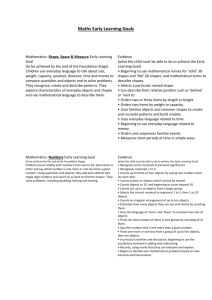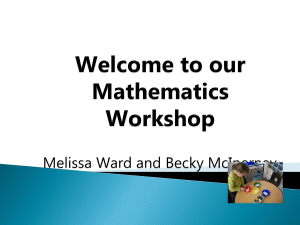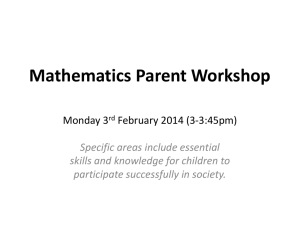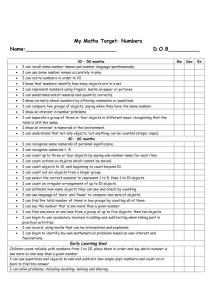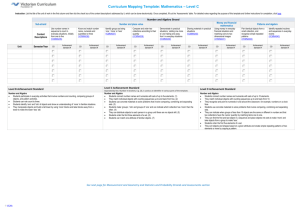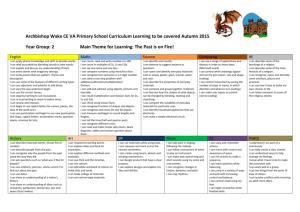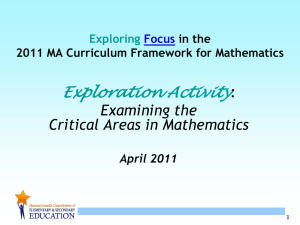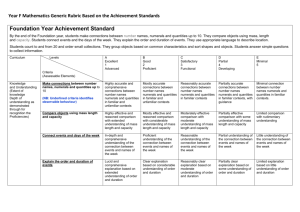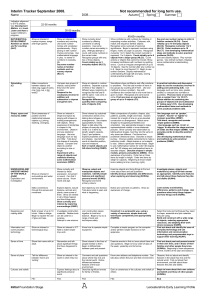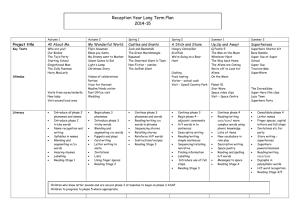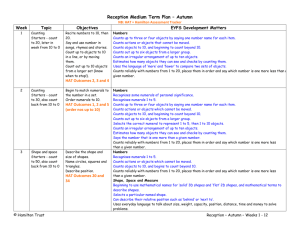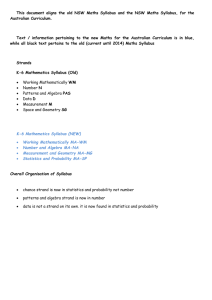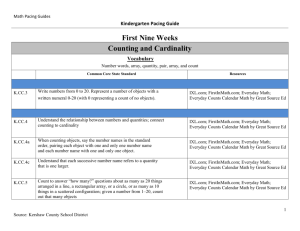ARE Maths Foundation Stage
advertisement
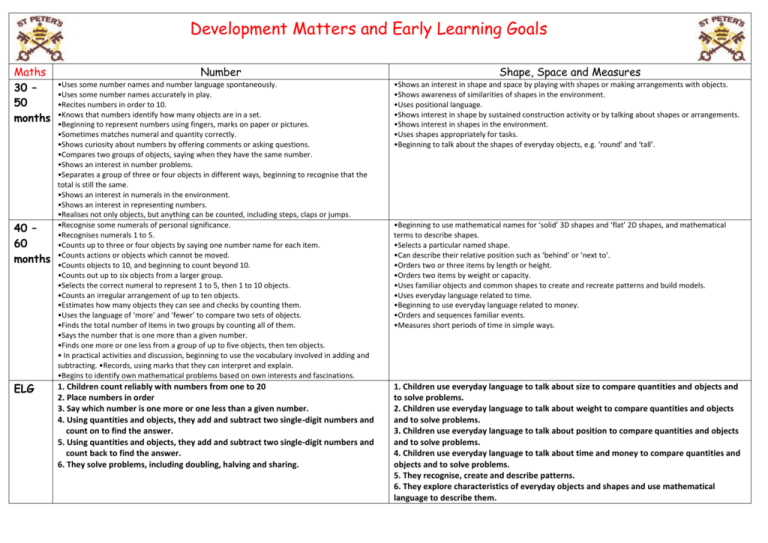
Development Matters and Early Learning Goals Maths 30 – 50 months 40 – 60 months ELG Number Shape, Space and Measures •Uses some number names and number language spontaneously. •Uses some number names accurately in play. •Recites numbers in order to 10. •Knows that numbers identify how many objects are in a set. •Beginning to represent numbers using fingers, marks on paper or pictures. •Sometimes matches numeral and quantity correctly. •Shows curiosity about numbers by offering comments or asking questions. •Compares two groups of objects, saying when they have the same number. •Shows an interest in number problems. •Separates a group of three or four objects in different ways, beginning to recognise that the total is still the same. •Shows an interest in numerals in the environment. •Shows an interest in representing numbers. •Realises not only objects, but anything can be counted, including steps, claps or jumps. •Recognise some numerals of personal significance. •Recognises numerals 1 to 5. •Counts up to three or four objects by saying one number name for each item. •Counts actions or objects which cannot be moved. •Counts objects to 10, and beginning to count beyond 10. •Counts out up to six objects from a larger group. •Selects the correct numeral to represent 1 to 5, then 1 to 10 objects. •Counts an irregular arrangement of up to ten objects. •Estimates how many objects they can see and checks by counting them. •Uses the language of ‘more’ and ‘fewer’ to compare two sets of objects. •Finds the total number of items in two groups by counting all of them. •Says the number that is one more than a given number. •Finds one more or one less from a group of up to five objects, then ten objects. • In practical activities and discussion, beginning to use the vocabulary involved in adding and subtracting. •Records, using marks that they can interpret and explain. •Begins to identify own mathematical problems based on own interests and fascinations. •Shows an interest in shape and space by playing with shapes or making arrangements with objects. •Shows awareness of similarities of shapes in the environment. •Uses positional language. •Shows interest in shape by sustained construction activity or by talking about shapes or arrangements. •Shows interest in shapes in the environment. •Uses shapes appropriately for tasks. •Beginning to talk about the shapes of everyday objects, e.g. ‘round’ and ‘tall’. 1. Children count reliably with numbers from one to 20 2. Place numbers in order 3. Say which number is one more or one less than a given number. 4. Using quantities and objects, they add and subtract two single-digit numbers and count on to find the answer. 5. Using quantities and objects, they add and subtract two single-digit numbers and count back to find the answer. 6. They solve problems, including doubling, halving and sharing. 1. Children use everyday language to talk about size to compare quantities and objects and to solve problems. 2. Children use everyday language to talk about weight to compare quantities and objects and to solve problems. 3. Children use everyday language to talk about position to compare quantities and objects and to solve problems. 4. Children use everyday language to talk about time and money to compare quantities and objects and to solve problems. 5. They recognise, create and describe patterns. 6. They explore characteristics of everyday objects and shapes and use mathematical language to describe them. •Beginning to use mathematical names for ‘solid’ 3D shapes and ‘flat’ 2D shapes, and mathematical terms to describe shapes. •Selects a particular named shape. •Can describe their relative position such as ‘behind’ or ‘next to’. •Orders two or three items by length or height. •Orders two items by weight or capacity. •Uses familiar objects and common shapes to create and recreate patterns and build models. •Uses everyday language related to time. •Beginning to use everyday language related to money. •Orders and sequences familiar events. •Measures short periods of time in simple ways.
